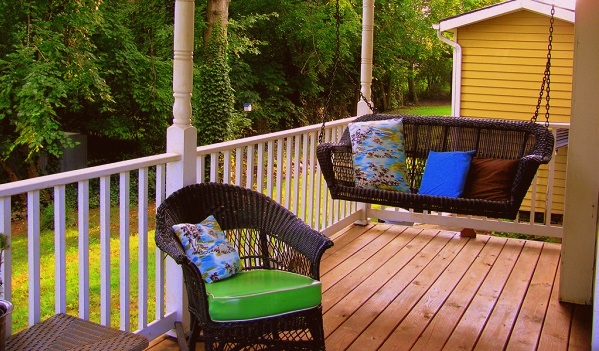Ageless Design: Building a Home for Seniors
Cary, NC — What makes a home a suitable place to grow old in or an accessible place for people with disabilities? To continue my aging in place series, I’ll describe what ageless design is and how it can help senior citizens stay in their homes longer.
What is Ageless Design?
Ageless design is more than just having a ranch or first floor bedroom (although that helps). In the past, builders have not taken into account age-related conditions such as reduced mobility or limited range of reach in most homes. Now, people are starting to realize that ageless design should be considered by anyone building or remodeling a house.
The local Home Builder’s Association’s Council for Ageless Residential Design (CARE) educates builders about design features that can be incorporated into homes to make them ageless now–or in the future. For example, utilizing a design with two closets stacked on two floors now could make for an easy modification to become an elevator shaft later on in life.
Financial Benefits
When building a new space, an additional 5% upfront cost could mean a 35-40% savings per item if you don’t have to retrofit it later. Wider door frames, easy walk-in shower stalls and re-configured entrances are costly retrofits, but they only require a little extra planning and effort to accomplish during the original design period.
In 1998, to put this trend into perspective, the U.S. Green Building Council (USGBC) established ratings for “green houses.” What the USGBC invented 15 years ago is no longer the future for the home building industry. Now, green building becomes more entrenched in our building codes. The same will happen with ageless design, making homes more marketable.
In the Triangle MLS system, only 2,488 houses had any accessibility features listed (that’s only 8% of the 30,965 houses sold in 2014). With baby boomers aging, this appeal will only grow. According to SeniorResources.com, “70% of seniors spend the rest of their life in the place where they celebrated their 65th birthday.”
What Makes a Home Ageless?
For financial reasons, we wish that our roofs would never age or that our appliances would never break, but that’s not the meaning of an ageless home. As a member of the CARE Council, I’ve learned about features that are adaptable and allow access and safety. Here’s a brief summary:
You can view a more detailed list online.
Video – Home Solutions for Aging in Place
This video shows some simple modifications that can come in handy in the future.
https://www.youtube.com/watch?v=kBq8W7t22l0&feature=email
The Choice: Remodel or Move Out?
The home environment can often make daily activities difficult for seniors. If your home or your parents’ home is not an ageless design, should you remodel or move into a new home or senior facility? If independent living is still an option, remodeling might be an option.
John Sperath from Blue Ribbon Residential Construction, Inc. says:
Considering assisted living (costs versus) the cost savings, if someone were to remodel a master bathroom for $40-$50K and add a barrier free shower, they get the benefit of a safer bathroom–plus it is a major boost to re-sale. If there are accessible features in a home it makes it more sell-able and will continue to improve sell ability for the foreseeable future.
The bottom line? Be proactive when designing a house. Each situation is unique but, if you’re starting to think about this, I hope this information helps you get started.
———————————————————————————————————————————–
Nancy Caggia earned her SRES/Senior Real Estate Specialist and works at BHHS YSU Realty. Lead photo by Nannette Turner. Additional photos from John Sperath.
Read more about aging in place.
———————————————————————————————————————————–
Community coverage is sponsored in part by Silver Linings, offering counseling, hypnosis and wellness services on Maynard Road in Cary.





